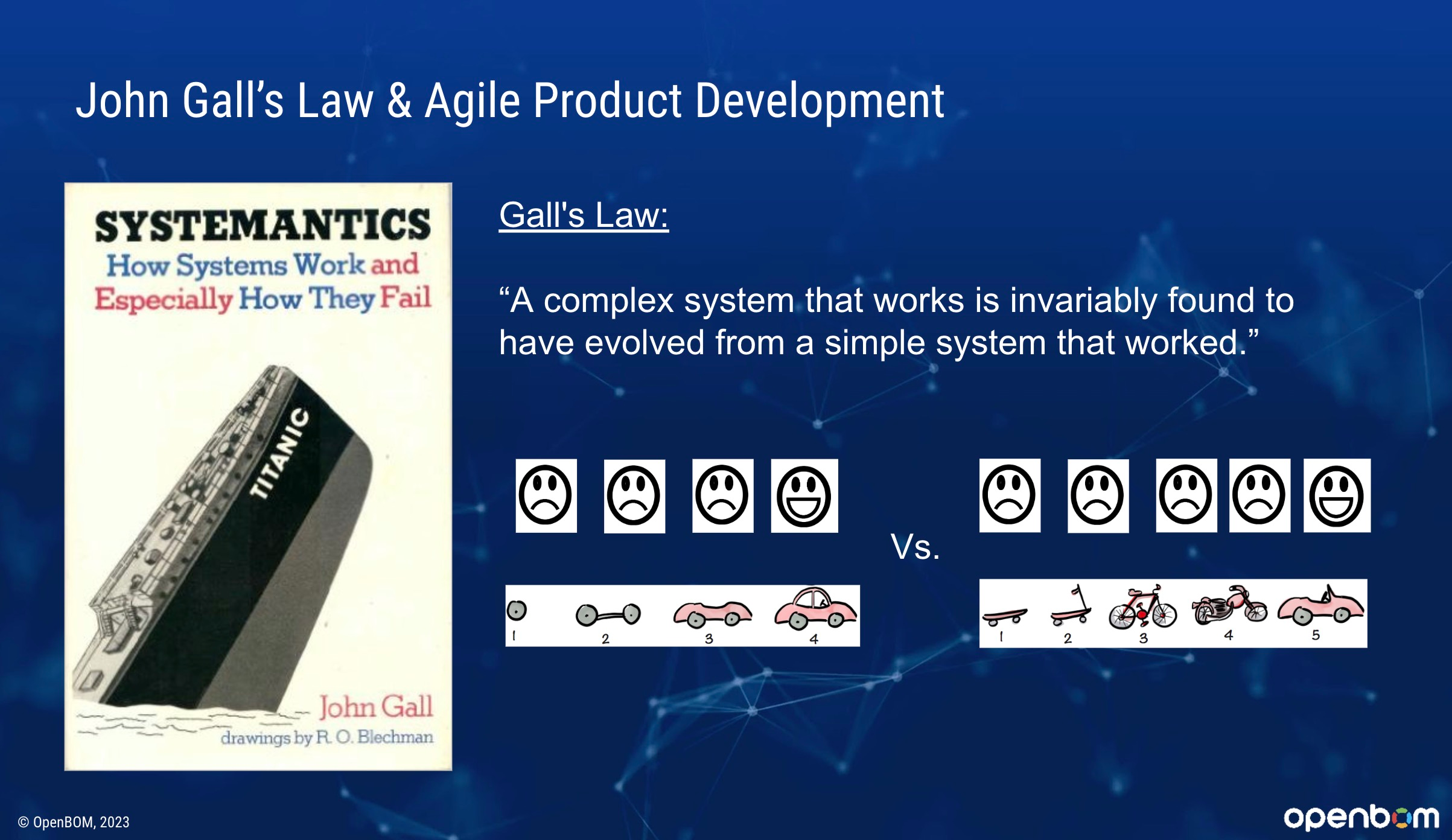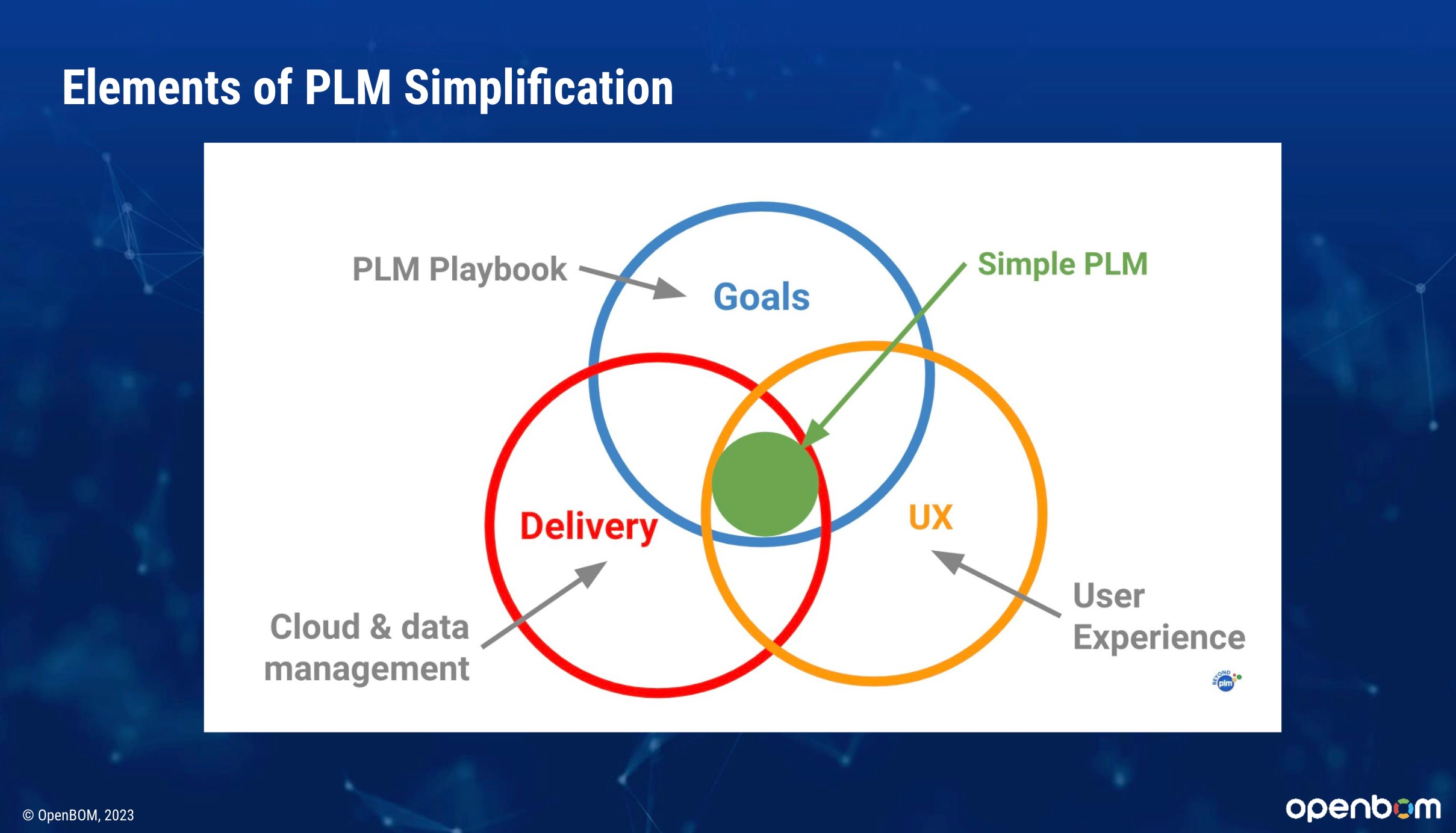
I was invited by Domain Systems, a leading PLM service provider with decades of experience helping manufacturing companies implement PLM systems to share my thoughts about PLM simplification trends in the webinar. You can find the recording here.
As the digital age advances, the intersection of manufacturing and software becomes inescapably intertwined. For years, PLM software was a synonym for complexity, including installation, configuration, implementation, consulting, and many other activities. Working with many PLM professionals, I can say that “wrapping your head around PLM” was never a simple task.
One of my favorite trends, which I have followed and admired for many years is the simplification trend. The quest for simplicity is coming. And, in my view, it will significantly impact PLM business strategy, software architecture, user experience, and implementation practice.
The manufacturing world, traditionally associated with complex machinery and intricate processes, is now leaning towards streamlined software solutions that simplify tasks, reduce human error, and increase productivity. But it’s not just about making things ‘easier’. It’s about intelligent design, intuitive interfaces, and a drive to ensure that every line of code brings tangible value to the production floor.
My article today is inspired by the webinar. I want to uncover the roots and share some ideas about how the Simplification Trend in PLM will develop and how it can impact and benefit your business. You can also see the slide deck from the webinar in the link below.
The Death of Complexity
A decade ago, the Gartner report about consumer software declared the death of complexity.
Here is how it goes:
The consumer market is becoming progressively less tolerant of complexity. Although consumers tend to buy products with ever-richer features, they often prefer those that are simple and intuitive.
The ability to provide appealing and intuitive user interfaces has become a critical point of differentiation among competing technology providers. As technology becomes more complex, vendors need to invest more in keeping the user interface simple and intuitive.
T&SPs therefore need to focus on simplifying technology, pricing, brand messaging, and feedback and interaction, and consider offering chargeable help services for consumers challenged by installing and configuring new equipment and services in their homes.
In my view, it was a very profound conclusion indicating the end of the era of complexity in software. Following the development of web and mobile applications and a huge focus on ads, big tech companies made a conclusion that providing free tools combined with ads would bring billions of dollars in revenue, which triggered the trends toward developing of simple user experience and focus on how to keep people engaged with web tools.
While you can argue that business software like PLM, ERP, and others was never about advertising, we can acknowledge that two decades of consumer software development created a generation of people who cannot tolerate complex software.
Therefore the question Does your PLM software really have to be so complex? is coming from Gen-Z people coming to workplaces in the 2020s.
Agile Development and John Gall’s Law
You cannot build a complex system from scratch. It will fail. This is a conclusion that was made by John Galland it is called Gall’s Law.
What Is ‘Gall’s Law’? Gall’s Law states that all complex systems that work evolved from simpler systems that worked. If you want to build a complex system that works, build a simpler system first, and then improve it over time.
I highly recommend you to check his book – General Systemantics (retitled Systemantics in its second edition and The Systems Bible in its third) is a systems engineering treatise by John Gall in which he offers practical principles of systems design based on experience and anecdotes. The book is offered from the perspective of how not to design systems, based on system engineering failures.

The main point of the book is that large complex systems are extremely difficult to design correctly despite the best intentions. Therefore, doesn’t matter what you built you need to take the steps to build a less complex system and then evolve to a complex system with incremental functionality based on close and continual touch with user needs and measures of effectiveness.
Who Needs Simple PLM software?
When you’re in the business, the first question is to ask “Who needs what you do”. PLM businesses are taking root in extremely complex product lifecycle management environments that exist in the aerospace, automotive, and defense industries. The business processes, product lifecycle, and supply chain management of these companies are so complex that the question about simplicity and simplification was probably the last one companies were thinking back 50-60 years. The goal was to organize document management and product development processes to support designing and building products (aircraft, cars, missile systems, and others)
However, things are evolving and the industry is growing understanding about the need to simplify business processes and tools such as computer-aided design (CAD) systems, product data, and product quality systems. Such a desire to simplify the product development process is based on the fundamental understanding of the effectiveness of simplicity in business organizations.
Here is my quick take on who needs simple PLM software.

The change is hard. Even simplicity always wins, the process towards simplicity is not simple. Existing company businesses are sometimes built with complexity in mind, some services provided by consulting and implementation services companies provide benefits based on the realities of existing complex PLM software that requires installation, configuration, and maintenance activities. Simplicity requires a new state of mind that is not always present in business systems, production processes, existing PLM technology, and overall company philosophies.
3 Dimensions of PLM Software Simplification
Here is my take on three activities that will form the trend toward PLM simplification:
- Agile PLM Implementations Playbook for Unstoppable PLM
- Cloud and new data management technologies
- New user experience

There is no magic bullets, these transformation will take time and will require effort. No one will drop existing PLM Systems of Records products (even if they are super complex ) and replace them with other tools. However, the new system of engagements is coming to complement existing PLM platforms and provide solutions to painful problems that exist in engineering and manufacturing software.
Webinar Presentation Slide Deck
Watch the slide deck from my webinar by Domain Systems earlier this week.
Conclusion
I think, there is a transformative power in simplicity. Therefore, I can see huge promise in PLM business adopting the simplification trend demonstrating that in the midst of intricate digital webs, less truly is more. There is a clear trend towards simplicity applying new methodologies, and technologies, and creating new user experiences to solve old and painful problems of manufacturing businesses. The new solutions will use the power of new data management and AI to bring the value of data quality and make up-to-date information available for everyone in product lifecycle management. Modern systems will leverage product-related data to optimize the manufacturing process.
Just my thoughts…
Best, Oleg
Disclaimer: I’m co-founder and CEO of OpenBOM developing a digital thread platform including PDM/PLM and ERP capabilities that manages product data and connects manufacturers, construction companies, and their supply chain networks. My opinion can be unintentionally biased.











